Vaikom Satyagraha was for the right of the 'untouchables' to use the roads around the temple; it later led to the temple entry proclamation.
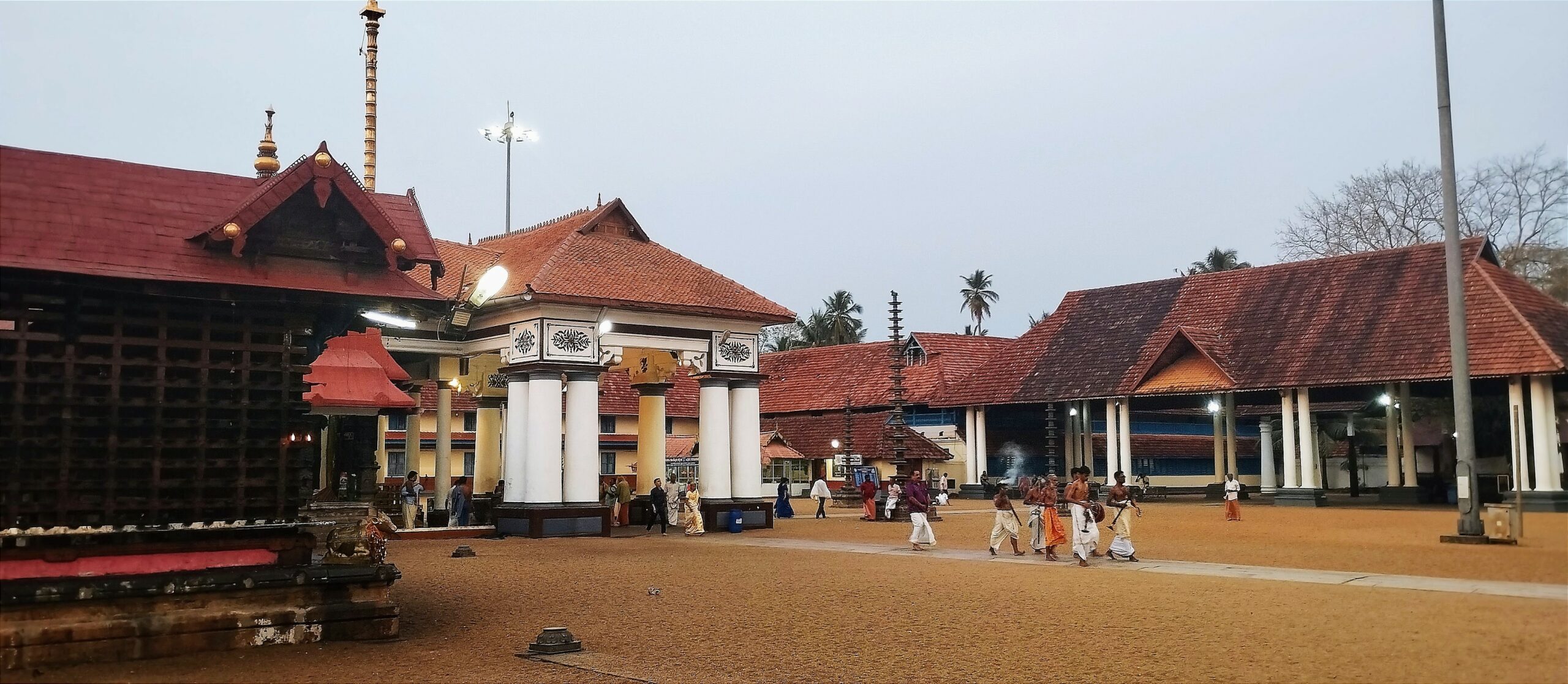
The Vaikom Mahadeva Temple at the heart of the satyagraha. (KA Shaji/South First)
Part of a special series on the Vaikom Satyagraha. It was on 30 March, 1924, that an agitation began centered around the Shiva temple in the central Kerala town of Vaikom in the then princely state of Travancore. The temple not only did not allow the lower castes in, it also forbid them from using the roads around it. The largely non-violent agitation marked the beginning of temple entry movements across India.
People on the banks and passing canoes waved at the boat as it headed towards Vaikom on 9 March, 1925. An enthusiastic crowd was already waiting at the old wooden jetty at Vaikom to welcome its passengers.
The otherwise peaceful place situated northwest of Kottayam in Central Kerala had by then grabbed national attention. An agitation for the right to move freely, and worship, in the local temple was on at Vaikom.
Mahatma Gandhi and others were arriving by boat to participate in the agitation. But little was then known that Vaikom was the laboratory that fine-tuned the non-violent satyagraha that later shook even the British Empire.
The agitation had its share of blood and tears. The Dalawa Kulam (Pond of the Dalawa or minister) is testimony to the atrocities committed against the agitators.
Located close to the eastern entrance of the majestic Vaikom Mahadevar Temple, the pond had, in 1806, seen more than 200 youths buried alive.
The youngsters, belonging to the “low caste” Ezhava community, had dared to attempt to enter the temple and worship Lord Shiva. They questioned the existing Ayitham — or untouchability — which allowed bullock carts around the temple, but not human beings from the so-called lower castes.
Caste Hindus, with the support of the Travancore army, quelled the rebellion of the untouchables by burying them in the pond. Veluthampi Dalava, the prime minister of the then princely state, had ordered their killing.
A cavalry led by Vaikkom Padmanabha Pillai killed those youths, further cementing the caste-based discrimination at the temple and exposing the brutality of the Travancore dynasty, which pretended to be benevolent.
A busy bus station operating services to different parts of Kerala has replaced the infamous pond.
“They filled the pond with the rebelling Ezhava youths. We have now set up a bus stand for all, irrespective of their castes, as a tribute to the martyrs. The bus station is a tribute to them,” PK Harikumar, Left politician and former chairman of Vaikom Municipality, who had authored a book on the satyagraha, told South First.
Noted scholar and activist Dr TT Sreekumar disagreed. “The 1806 agitation was the first major strike seeking entry to the temple. Nobody cared for those who were subjected to the brutalities of the casteist Travancore dynasty,” he said.
“No fitting tribute has been paid to those martyrs. They remain forgotten and discriminated against even now. How many people who use the bus stand now know the heinous crime committed by the Travancore state,” he told South First.
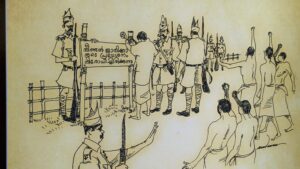
An artistic representation of the installation of a board prohibiting the entry of untouchables. (Artist: Madanan)
A little away from the bus stand, at the Vaikom Taluk Toddy Tappers Union office, its secretary TN Ramesan pointed at the spot where Mahatma Gandhi had sat along with C Rajagopalachari, Mahadev Desai, and Vinobha Bhave.
The leaders’ intention was to persuade Indanturuttil Devan Neelakantan Nambiathiri, head of the then powerful Namboodiri household Indanturuttil Mana, to allow the “untouchables” into the temple.
The Nambiathiri rejected Gandhi’s request, interpreting religious texts and with sarcastic comments. Gandhi returned from the mana (traditional Namboodiri residence), hurt and humiliated.
“Like the casteism they upheld, the money and muscle power of Indanthuruttil collapsed as soon as India attained freedom. Kerala’s communist governments initiated radical land reforms, making tenants legal inheritors of the land they possessed,” Ramesan told South First.
“Feudal Namboodiris suffered a financial crisis. We bought the mana, including the one-and-a-half acres it sits on, using the money toddy tappers had pooled. The mana was bought from the son of Devan Neelakantan, who wanted money to conduct his daughter’s marriage,” he said.
“In a way, the lower caste toddy tappers avenged the humiliation meted out to the Mahatma. It’s a communist intervention on behalf of Gandhi,” Ramesan added.
The union office, affiliated with the CPI, also has a photograph of Gandhiji with a red ribbon for a garland.
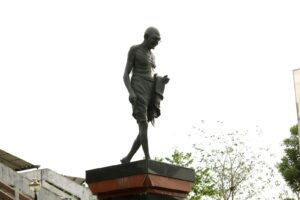
Gandhi statue in Vaikom Town
However, the scholar Sreekumar presented a different view. “Mahatma Gandhi played the role of a mediator when the protest turned violent. He went to the mana seeking a compromise, and now we celebrate that instance while forgetting the people who sacrificed themselves at the Dalawa Pond,” he said.
Outside the temple’s western gate, a cool bar owner P Thomas confirmed that Vaikom now doesn’t discriminate against anyone on caste or religious lines. His shop is hardly 100 metres from the temple.
Thomas hails from a lower-caste family that converted to Christianity.
“Strangely, even this spot where my shop is located was once inaccessible to people from lower castes and other faiths,” he said.
“Now, I am a beneficiary of the historical justice ensured by the national movement,” Thomas told South First.
Located on the banks of the scenic Vembanad Lake, Vaikom is a prominent tourism spot, along with the neighbouring backwater destination of Kumarakom.
The panoramic backwaters and the Mahadeva Temple attract visitors from far and wide.
But it was not the case before. “The Vaikom Satyagraha, which lasted 603 days, was an epic struggle and the longest in South India. It inspired movements against untouchability across the country. For the Indian National Congress, it was an energy booster in its struggle for India’s freedom and social reformation,” Leader of the Opposition in the State Assembly VD Satheesan said.
“It taught the values of Dalit empowerment. It’s a milestone in Kerala’s renaissance movement,” he told South First.
Satheesan claimed that the legacy and credit of the satyagraha belonged to the Congress, and it has every right to celebrate the centenary.
AICC president Mallikarjun Kharge is inaugurating the centenary celebrations at a mammoth rally in Vaikom on Thursday, 30 March.
Though the communists had little role in the satyagraha, the LDF government is also organising a function to mark the centenary. Chief Minister Pinarayi Vijayan would be the chief guest along with his Tamil Nadu counterpart MK Stalin.
The Union Government is also holding an event in which Minister Arjun Ram Meghwal and former Mizoram governor Kummanam Rajasekharan will participate.
The Sangh Parivar also had no role in the satyagraha.
Sree Narayana Dharma Paripalana Yogam (SNDP) is also celebrating the centenary separately, highlighting the roles played by its leaders like TK Madhavan and the poet Kumaran Asan, who had the blessings of iconic social reformer Sree Narayana Guru.
The Nair Service Society, which boasts of its founder Mannathu Padamanabhan’s role in the struggle, has decided to stay away, complaining that none of the organisations has given it due prominence.
Going by history, eminent Congress leader and Sree Narayana Guru’s disciple TK Madhavan brought the issue of untouchability in Travancore to the attention of Mahatma Gandhi at the 1921 Congress session held in Tirunelveli.
In the 1923 Kakinada session of Congress, the leadership authorised the state unit to take the initiative for the agitation.
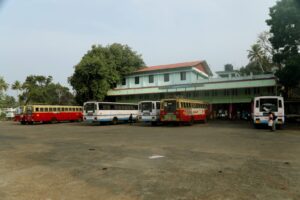
The Dalava Pond massacre site is now a bus stand in Vaikom town. (Shafeeq Thamarassery)
In the centenary year, the struggle immortalised by Gandhiji and Periyar EV Ramasami has been adjudged as the first well-organised agitation in the country against upper caste arrogance and caste-based discrimination.
It ensured basic civil rights, primarily walking on public roads. It helped the Congress shrug off its image as an upper-caste national organisation and prompted many forward-looking upper-caste people to severe caste identities and stand with the avarnas (untouchables).
As it created national headlines, a set of Akalis from faraway Punjab reached Vaikom and opened a langar to distribute free food. Historians said it was the first time the north Indian chapati found a place on Kerala’s menu.
In the subsequent years, social movements reinforced the cause of the satyagraha. The princely state hesitantly revoked the long-existing ban on lower castes using the public roads around the temples. The satyagraha was a sequel to the social reformation movements initiated by iconic leaders Sree Narayana Guru and Ayyankali.
According to Congress leader M Liju, the SNDP Union first raised the demand for the right to walk on roads around Vaikom temple. That was at the beginning of the 20th century, and the demand was inspired by Narayana Guru, an Ezhava, then a lower caste now classified as OBC.
The princely state rejected the demand saying religious customs could not be tampered with.
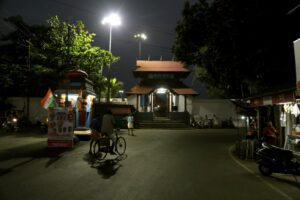
A night view of the western gate of the Vaikom Temple. (Shafeeq Thamarassery)
On 30 March, 1924, protestors thronged Vaikom donning Nehru caps and khadi, and walked on the roads in groups, defying the ban.
The police kept arresting the protesters and move volunteers replaced them, making the satyagraha a mass movement. Police lockups, prolonged court processes, and jail terms failed to dampen the spirit of the satyagrahis.
Even Narayana Guru, who till then preferred to stay away from active political engagement, arrived at Vaikom in September 1924 and announced his support to the agitators.
He contradicted Gandhi’s view that the protestors should not breach police barricades and enter the temple. He wanted the lower castes to enter the temple. Despite provocation, the agitators never resorted to violence.
Gandhi arrived at Vaikom on 9 March, 1925, along with a set of national leaders.
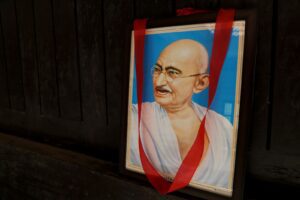
The Gandhi photograph at the toddy tappers’ union office. (KA Shaji/South First)
The demise of Travancore king Sree Moolam Tirunal was a major development in the agitation’s history. His diwan T Raghavaiah, who was hostile towards the agitation, had to step down.
Moolam Tirunal’s niece Sethulakshmi Bai took over as the Regent Rani and the equations changed.
On Gandhi’s request, the Rani and WH Pitt, the British police commissioner of Travancore, offered a settlement formula.
And the roads on three sides of the temple would be thrown open to all. However, the street on the eastern side would continue to be exclusive for the upper castes.
Gandhi accepted it, and then the prolonged agitation ended. In 1936, Travancore made a historic proclamation, throwing open all temples in the princely state to backward castes. It was a direct fallout of the satyagraha.
Gandhi had differences from Narayana Guru and Periyar regarding the character of the agitation. But the satyagraha’s impact was far-reaching.
Most upper-caste landlords with money and assets deserted Vaikom, leaving the region to poor agricultural labourers and fish workers. They returned only to participate in the annual Ashtami festival of the temple.
“The satyagraha widened the scope of democracy from a mere test of the majority to include elements of social justice. In that respect, it paved the way for an internal revision within freedom and democracy,” Sunil P Elayidom, thinker and academician, observed.
“It may have failed in equating caste discrimination to violation of human rights, but the movement’s spirit continues to reform Kerala. We have to fight more,” he told South First.
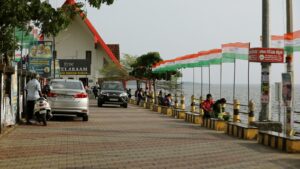
Vaikam immersed in festive spirit ahead of the centenary events. (Shafeeq Thamarassery)
“The role played by Gandhi requires a closer look. He acted as a remote control, rephrasing the whole agitation in a way that contradicted the view of Periyar and Narayana Guru,” Sreekumar said.
“He also prevented his disciple George Joseph from participating, terming the satyagraha a Hindu affair. Gandhi also forced the Akalis to return, stopping the food supply to the protestors,” he pointed out.
“There is nothing strange about all this, as it was his style of functioning. But Gandhi, along with Guru and Periyar, contributed significantly to make it a struggle of national importance and inspiring people to undertake similar agitations against injustice,” Sreekumar added.
In Vaikom, there are two memorials for the satyagraha. The one maintained by the Kerala Government’s Culture Department displays old documents and communications related to the satyagraha.
Though its foundation was laid by then prime minister Indira Gandhi in 1975, the construction was delayed for over 25 years.
Another memorial is by the Information and Public Relations Department of the Tamil Nadu government, and it was conceptualised by the then chief minister MG Ramachandran as a tribute to Thanthai Periyar.
Both memorials do not have any photographs of the satyagraha as the then princely state had not allowed journalists and photographers to access the location. Sketches by artists compensate for the lack of photographs.
Vaikom now is all decked up for the centenary celebrations to begin.
The temple and the roads around it look majestic. The Indamthuruthi Mana and the old jetty at the corner of the town are attracting visitors along with the two memorials.

Apr 26, 2024

Apr 25, 2024

Apr 25, 2024

Apr 25, 2024

Apr 24, 2024

Apr 24, 2024